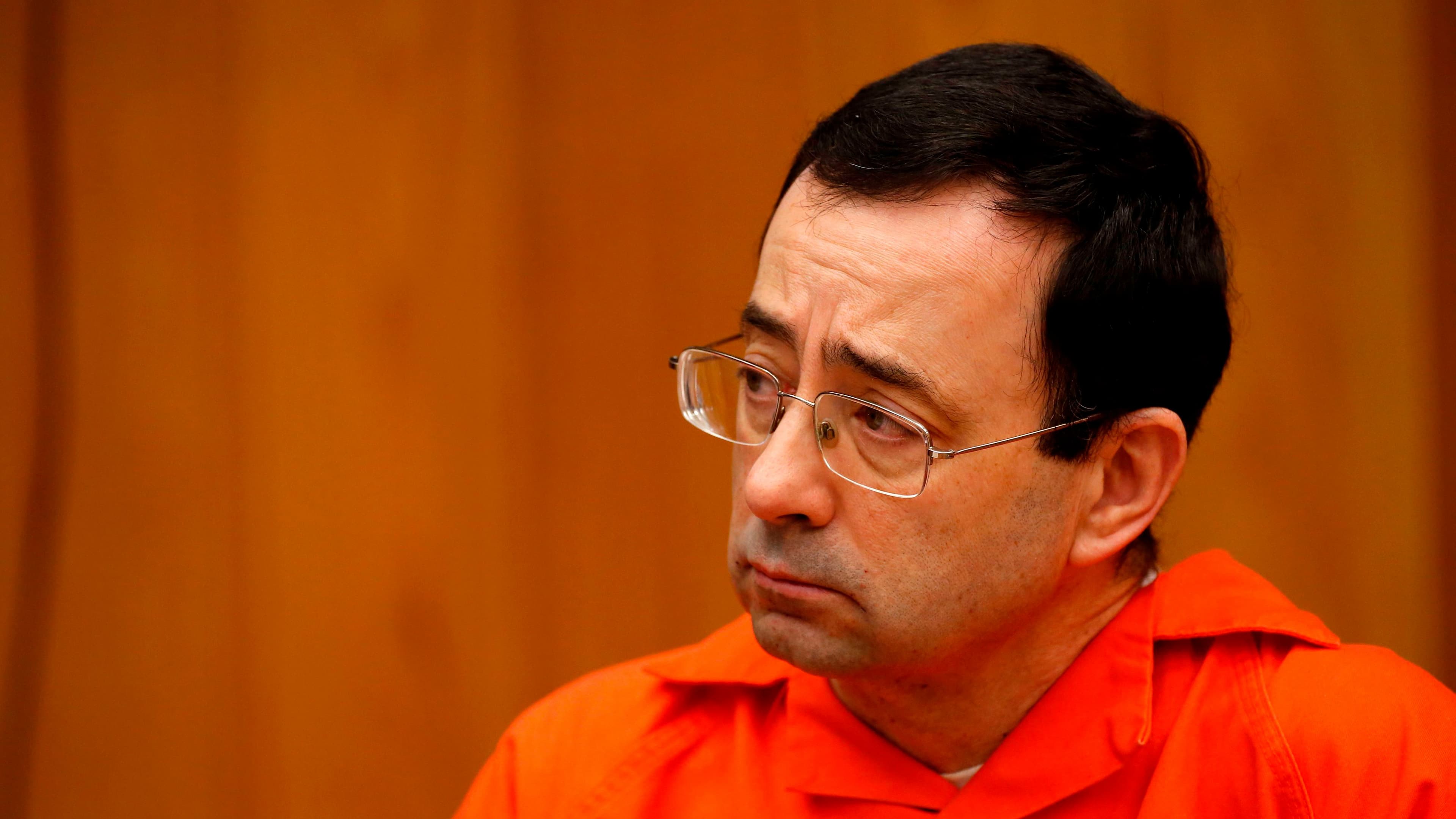Larry Nassar, a former doctor at Michigan State and for USA Gymnastics, is sentenced to 40 to 175 years in prison for sexual assault on January 24, 2018. Nassar was found guilty of using his position in sports medicine to abuse hundreds of women and girls in one of the most high-profile cases to arise from the #MeToo movement.
The scandal resulted not only in his imprisonment, likely for the rest of his life, but also criticism of the institutions that failed to detect and respond to his behavior. In the wake of the revelations, the president of Michigan State and the entire board of USAG resigned, while Nassar’s accusers, which number over 260, received the Arthur Ashe Courage Award.
Nassar began working in sports medicine at a young age and began working as a trainer for the U.S. national gymnastics team in 1986. He later received his doctorate in osteopathic medicine from Michigan State and went on to work at the school’s College of Medicine as well as at the Karolyi Ranch, the Texas training center of the US gymnastics team. It was there that he sexually assaulted gymnast Maggie Nichols during a medical exam during a national team training camp in 2015. After a coach heard Nichols and another athlete discussing Nassar’s examinations, she reported the doctor to USAG. USAG contacted the Federal Bureau of Investigation but did not take immediate action against Nassar or notify his university.
Later that year, USAG cut ties with Nassar. A year later, in September 2016, the Indianapolis Star broke the news that two other gymnasts had accused him of sexual abuse, resulting in his firing from Michigan State. In November, Nassar was indicted on the charge of repeatedly abusing an unidentified child, beginning in 1998 when the child was six years old.
From there, the allegations snowballed. Three more athletes went public with their accusations on 60 Minutes in 2017, calling out the “emotionally abusive environment” at national team training camps. More came forward in subsequent interviews or using #MeToo on Twitter. Among the wave of accusers were several who had become household names for winning gold during the Rio 2016 Olympics, including McKayla Maroney, Aly Raisman, and Simone Biles. The involvement of athletes who had so recently been celebrated in the media further boosted the visibility of the Nassar case. All told, more than 260 women have alleged that Nassar abused them, in many cases while they were still minors. An FBI raid found more than 37,000 images of child pornography in Nassar’s possession; he pleaded guilty to the possession charge in July of 2017.
The trials for Nassar’s other charges featured multiple days of testimony from his victims. He pled guilty to multiple allegations in Michigan state court, receiving a sentence of 40 to 175 years in prison, but will first serve a sentence of 60 years in federal prison for possession of child pornography.
In addition to Nassar’s convictions, the investigation brought scrutiny on the institutions that employed him. Reporting by the Star and other outlets found that USAG failed to adequately monitor its coaches and had knowingly refused to act on multiple allegations of abuse. At Michigan State, too, the problem proved to extend beyond Nassar. After allegations of repeated failure to investigate claims of assault against members of the football team, three players pled guilty to a lesser charge in a sexual assault case in 2018. The dean of the university’s school of osteopathic medicine, who oversaw Nassar’s clinic, was also charged with groping and possessing nude photos of a student.
A 2019 congressional report concluded that USAG, the university, the U.S. Olympic Committee, and even the FBI had all dragged their feet, allowing Nassar to continue to see patients as they slowly investigated and coordinated their response to the predicted public outcry. The university reached a settlement of $500 million with Nassar’s victims, the largest ever settlement of its kind, and former president Lou Anna Simon faced felony charges for lying to or misleading law enforcement regarding her knowledge of accusations against Nassar.
The Nassar case made international headlines. Nassar’s behavior and the failure of multiple institutions to protect his victims echoed many similar cases of serial abuse, such as Jerry Sandusky scandal at Penn State University or the decades of abuses committed by film producer Harvey Weinstein. The rapid expansion of the case from a few allegations to literally hundreds of women over multiple decades was a prime example of the power of the #MeToo movement. As with other cases brought to light in the #MeToo era, the Nassar case was both a sorely overdue reckoning with institutional abuse and a reminder that even the most prolific abusers can escape justice for decades.
